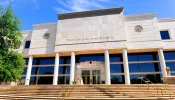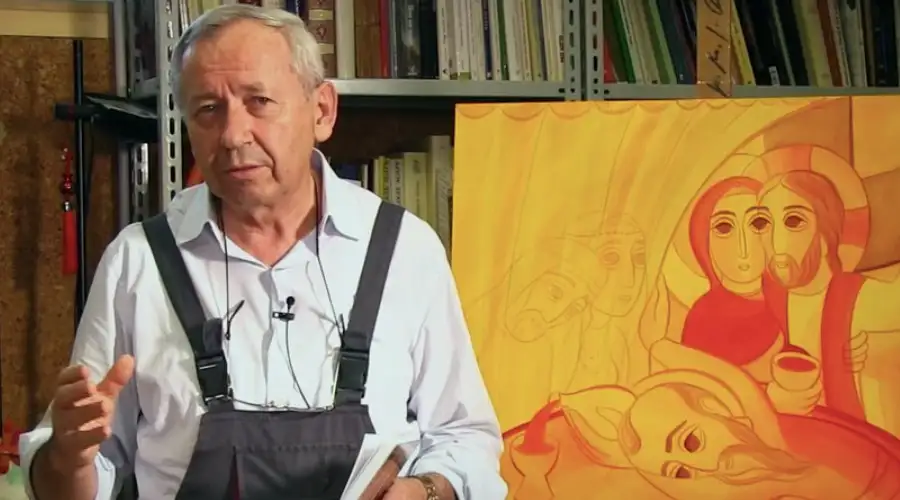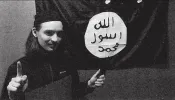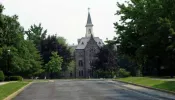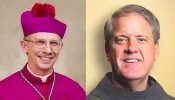CatholicAnchor.org
In Holy Week, the days just before Easter, one can catch Catholics in some ancient religious practices – some are so rare, they’re done only once a year.
Beginning Palm Sunday – March 28 – and running up to Easter, a week later, “we actually act out parts from Christ’s life,” Dominican Father Vincent Kelber of Holy Family Cathedral in Anchorage told the Catholic Anchor in an interview.
In doing so, explained Pope Benedict XVI in a March 2008 address, Christians “share in the mystery of Christ’s suffering, death and resurrection.”
Following are glimpses of what Catholics in the Archdiocese of Anchorage and around the world will be doing – and why.
PALMS, PROCESSIONS AND THE PASSION
On Palm Sunday, a week before Easter, the Catholic Church recalls Jesus’ messianic entrance into Jerusalem before his crucifixion. As Jesus rode into the city on a small donkey, the Jews gathered around him, throwing cloaks and palm branches on the road and exclaiming praises as he passed by.
So at Palm Sunday Mass, there is a blessing of palms which the faithful hold as they process into church. The blessed palms are later kept in the home as a witness to faith in Jesus Christ, the Messianic King, and in his Paschal victory.
Some churches host an additional, longer procession outdoors. St. Michael Church in Palmer, for example, annually hosts a procession around the city block, with a live donkey at the front of the group.
During Palm Sunday Mass, the Gospel account of the Passion of Christ is announced, with the priest, deacon, readers and congregation reading aloud, respectively, the responses of Christ, the Apostles and the crowds who appear throughout the Passion.
VEILED IMAGES
Beginning Palm Sunday, some churches cover or veil – with purple cloth – the religious artwork in the church – except stained glass windows and the Stations of the Cross. In some places, the images are removed altogether.
According to Monsignor Peter Elliott, author of “Celebrations of the Liturgical Year,” “The custom of veiling crosses and images … has much to commend it in terms of religious psychology, because it helps us to concentrate on the great essentials of Christ’s work of Redemption.”
Still, the somber custom is believed to come from a 9th century German practice of extending a large cloth called the “Hungertuch” (hunger cloth) before the altar from the beginning of Lent. The cloth – which hid the altar – was not removed until during the reading of the Passion on the Wednesday in Holy Week – at the words, “the veil of the temple was rent in two.”
Crucifixes are unveiled after the Good Friday ceremonies and all other images just before the Easter vigil Mass on Holy Saturday.
THE LORD’S SUPPER
On Holy Thursday, the Catholic Church celebrates a special Mass of the Lord’s Supper – that commemorates the institution of the Holy Eucharist at the Last Supper. On the night before Jesus Christ was crucified, he changed bread and wine into his own Body and Blood, and he commanded the Apostles – and their successors through the centuries – to act in his stead and re-present this sacrifice. So at every Mass, by way of transubstantiation, the bread and wine offered by the priest becomes Christ’s Body and Blood again.
WASHING FEET
Just as Christ did for his 12 Apostles at the Last Supper and as he commanded them to do likewise, during the Mass of the Lord’s Supper, the priest – who represents Christ – ceremoniously washes the feet of 12 people in the congregation. At the Holy Thursday liturgy in the Vatican, even the pope performs the foot washing. In fact, across the centuries, it has been practice for the pope to wash the feet of 12 priests after Mass and of 13 poor men after his dinner.
GOING WITH JESUS TO GETHSEMANE
After the Last Supper and before he was arrested and condemned to death, Jesus went to pray in the Garden of Gethsemane, accompanied by two of the disciples. So after the Holy Thursday Mass, the remaining sacred hosts are carried out of the sanctuary to an “altar of repose,” and the people go with the Eucharistic Christ in a procession. The transported is sometimes surrounded by decorations of greenery and flowers to suggest a garden. People stay for a time, adoring the wondrous sacrament that Jesus instituted that day 2,000 years ago. Some make an adoration visit at their own parish and then visit others into the night.
A VACANT CHURCH
The Mass of the Lord’s Supper finished, the church – now without the Eucharist – is truly empty. So the tabernacle light – which is always lit and signifying Christ’s presence – is extinguished, and the tabernacle door is left open, exposing the vacant space inside. The altar is stripped bare of its linens and candles, holy water is removed from the church’s fonts and the sacraments are not celebrated until the Easter vigil. Like the first Christians bereft of Jesus and mourning the two days after the crucifixion, the church stands unadorned until the Easter vigil Mass on Saturday night. With the resurrection of Jesus, the church’s joy is restored.
STATIONS OF THE CROSS
The Stations of the Cross devotion is centered on the Passion of Christ. While many Catholics pray the meditative prayer on their own across the year, it can be an especially poignant experience during Holy Week, when the entire church recalls the way of Jesus’ suffering and death. In fact, on Good Friday, many churches host parish-wide Stations of the Cross. By praying the Stations of the Cross, a person makes a spiritual pilgrimage to the principal scenes of the salvific Passion of the Lord, aided by artistic representations of those scenes, for example, Pilate’s condemnation of Christ to death and the nailing of Christ to the Cross. Usually, Stations of the Cross are found inside churches, spaced in intervals on the walls, but sometimes outdoors such as in the cloisters of monasteries. Each year, in Anchorage, Catholics gather to pray the Stations of the Cross, walking through the city.
EMBRACE THE CROSS
On Good Friday, the church gathers for the Liturgy of the Lord’s Passion, which includes a reading of a Gospel account of the Passion, Holy Communion (consecrated at Mass on Thursday night) and veneration of the Cross.
In that tradition, a priest or deacon holds a wooden crucifix while the faithful process to him at the foot of the sanctuary, as if to receive communion. There each person reverences the crucifix with a kiss or a bow.
In some places, there are additional Good Friday devotions. Especially from noon to 3 p.m. – the hour at which Christ died on the cross – some silently meditate, pray the Stations of the Cross or participate in a Good Friday procession.





